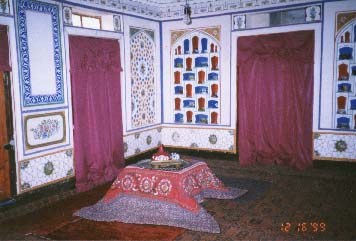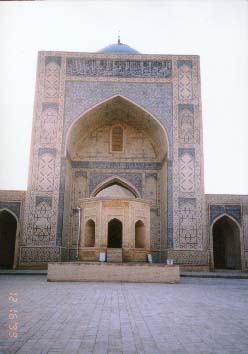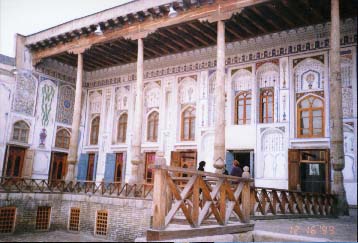|
|
|
| In the Sanskrit word, Bukhara signifies “monastery”, and the city was once a large commercial center on the Great Silk Road. Bukhara was already considered an important cultural and trade center, which in fact determined the drama of the city’s historical fate. Bukhara has more than 140 architectural monuments, and is considered a museum in and of itself, dating back to the Middle Ages. 2,300 years later, creations like the Poi-Kalon, Kos Madras, Ismail Samani Mausoleum and the Kalian Minaret are attracting a lot of attention. The Ismail Samani mausoleum is the oldest monument in Bukhara. It was built by Ismail Samani, one of the rulers of the Samanid dynasty. The gray-colored ornamentation is never the same when light shines upon it. The Fortress Ark Citadel used to be the residence of the Emirs and now is a museum. Opposite the Ark stands the Bolo-khaus complex of the twentieth century which has survived to this day. The history of Bukhara is more astonishing than the rest of the cities in Uzbekistan. The Bukhara oasis of Soghdiana was once conquered by Alexander the Great. Bukhara was also ruled by the Kushan Empire. Yet when Samanids got hold of Bukhara, they made it their capital. The 10th century saw Bukhara as more of a scientific and cultural center. Famous poets like Narashashi, Rudakim and Dakiki, and scientist Avicenna were well-known in this city. During the end of the 10th century Bukhara was under the Karahanids reign. Monuments like the Magoki-Attani, Namaz-Doh Mosque and Chashma-Ajub were witnesses to this particular period. From 1318-1389, Bukhara had a great religious leader - Sheikh Bahautdin Nakshbandi. His faith, Nakshbandism, was spread around Iran, Afghanistan, Turkey, India and Caucasus. In the 15th century, Bukhara was part of the Sheibanids State. Many Moslem monuments like madrasahs, hanakis, and mosques were built at that time. Bukhara’s monuments are the great historical and cultural heritage of the Islamic world. |
 |
 |
 |